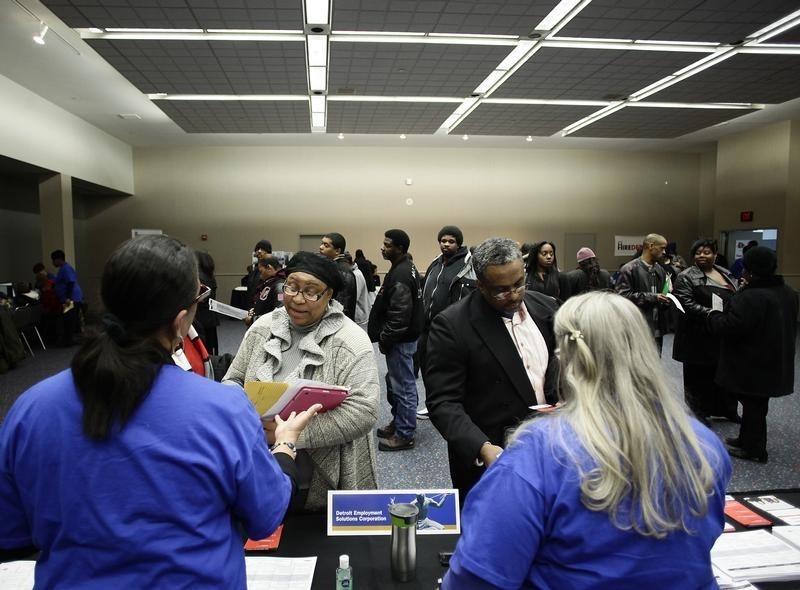By Lucia Mutikani
WASHINGTON (Reuters) - U.S. private employers boosted hiring in November and wage growth appeared to pick up in the third quarter, signs of labor market strength that could support the first Federal Reserve interest rate increase in nearly a decade later this month.
The reports on Wednesday overshadowed slumping manufacturing activity and underscored the economy's solid fundamentals.
"The data indicate a steady improvement in the labor market that should support the Fed's confidence that now is the right time to hike rates," said Thomas Costerg, senior U.S. economist at Standard Chartered (L:STAN) Bank in New York.
Private payrolls increased 217,000 last month on top of the 196,000 jobs added in October, the ADP National Employment Report showed. Employment gains were fairly healthy across the board, with manufacturing rebounding from two straight months of shedding jobs. The sector added 6,000 positions in November.
The ADP report, which is jointly developed with Moody's Analytics, was released ahead of the Labor Department's more comprehensive employment report on Friday.
Though the ADP report is not considered a reliable predictor of nonfarm payrolls, economists said it was broadly in line with their expectations for solid job gains in November. According to a Reuters survey, nonfarm payrolls increased 200,000 in November after surging 271,000 in October. Job growth is more than enough to keep up with population growth.
The Federal Reserve has signaled its intention to lift its benchmark overnight interest rate from near zero at its Dec. 15-16 meeting. Fed Chair Janet Yellen could offer more clues on the near-term monetary policy outlook when she addresses the Economic Club of Washington at 12:25 p.m. ET (1725 GMT).
The U.S. central bank last raised interest rates in June 2006. Market-based measures of Fed policy expectations assign a probability of 75 percent to the central bank raising interest rates this month, according to the CME Group's FedWatch site.
The dollar rose against a basket of currencies. U.S. government bond yields rose, with the 2-year Treasury note (US2YT=RR), the most sensitive to Fed policy expectations, hitting a session high above 0.94 percent. U.S. stocks were little changed.
Labor strength should help ease concerns about the economy after a report on Tuesday showed manufacturing contracted in November for the first time in three years.
WAGES ACCELERATING
A separate report from the Labor Department suggested wage growth, which has been frustratingly slow even as labor market conditions tighten, could be finally accelerating.
Compensation per hour in the third quarter rose at a 4.0 percent annual rate, and not the 3.0 percent pace the department had reported last month. Compensation was up a solid 3.6 percent compared to the third quarter of 2014.
Unit labor costs, the price of labor per single unit of output, was also revised higher to show it increasing at a 1.8 percent rate in the third quarter, instead of the previously reported 1.4 percent pace.
"The figures in today's report support the idea that wage inflation has picked up lately," said Daniel Silver, an economist at JPMorgan (N:JPM) in New York.
While productivity growth, which measures hourly output per worker, was revised up to a 2.2 percent rate in the third quarter, the trend remained weak. Productivity was previously reported to have expanded at a 1.6 percent pace.
It increased only 0.6 percent compared to the third quarter of 2014, the slowest rise in nearly a year.

Economists blame softer productivity on lack of investment, which they say has led to an unprecedented decline in capital intensity. They say persistently tepid productivity has lowered the economy's speed limit.